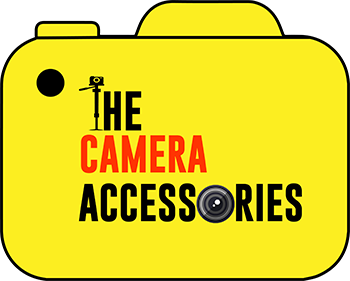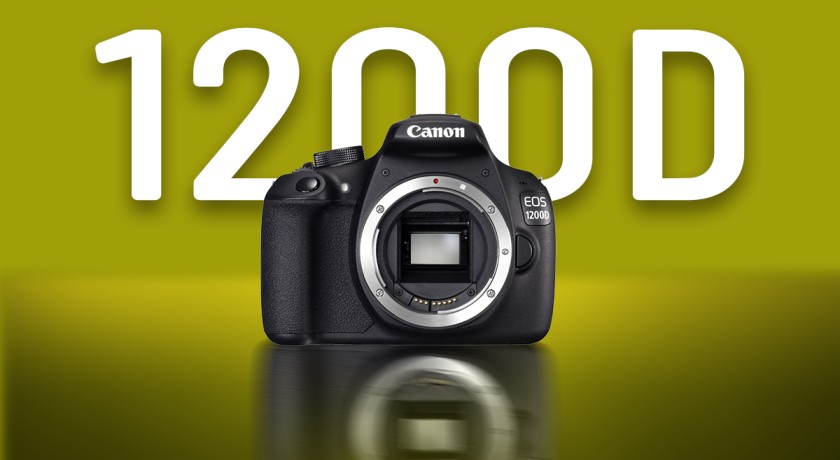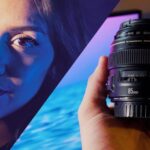The three-year-old Canon EOS 1100D camera has been replaced by the novel entry-level classic, the Canon EOS 1200D, identified as the Digital Rebel T5.
The Canon 1200D is a DSLR with an 18-megapixel APS-C CMOS sensor, a Digic 4 processor, a 3-inch LCD screen, 3 frames per second continuous shooting, a 9-point autofocus component, 63-zone iFCL.
Exposure metering, ISO 100–6400 sensitivity, and an on-screen Feature Guide. a stainless-steel framework and all-aluminum external, 1080p HD video capture with full control over exposure, focusing, and sound levels, and a new EOS Buddy smartphone app.
In India, the cost of the Canon EOS 1200D is a total of INR 30,000 ($419.99) for the body as well as £449.99 (USD 549) for the stabilized EF-S 18-55mm f/3.5-5.6 IS II lens.


Picture Quality of the Canon EOS 1200D
The 1200D exhibited the features we’ve come to expect from the EOS line: an amazing color palette and accurate information in JPEGs, the ability to extract finer details, and a greater dynamic range from RAW files. SLR photo quality tests seldom provide significant surprises, and the 1200D didn’t either. In contrast with earlier EOS consumer cameras. we found that autofocus functioned just as well in the viewfinder and live view.
When compared to their RAW output (processed in Lightroom 5), the gap is less noticeable, but Nikon is still in the lead.
The Nikon D3300 worked better with the same image than the automatic exposures, which were sometimes overexposed in our view.
While it’s simple to adjust for this, you might not notice it until you’ve taken a careful look at the images when you get back home. Brightness placement would have provided an easy remedy, but Canon opted against implementing it in this camera.
Would I Buy the Canon EOS 1200D?

Although more expensive, the D3300 is now available for around £489 without a kit lens. Also notable is the absence of an electronically stabilized lens in the 1200D pack we tested. a different set that comprises a stabilized lens that right now costs £319 (it has the part number 9127B032AA). We would be inclined to recommend putting the extra money into image stabilization given that we have yet to assess the IS lens’s image quality.
Other 1200D kits are also accessible, which are all excellent choices. A twin-lens pack with the non-calmed 18-55mm plus the 50mm f/1.8, a remarkable, cheap description lens that works far better than its cheap price would have you trust, is now accessible from Jessops for £340.
For those who want a telephoto lens that has a better focal length, there is also a three-way lens pack that originates with a 75-300mm lens.
While JPEGs express colors excellently, it’s essential to shoot raw for the finest details. This puts to light an important decision for anybody beginning out in SLR photography. It is important to get an imaging body with all the features you desire, but the lens or lenses you choose will have the greatest effect on the standard of the pictures you take. The 1200D serves as a cheap, basic camera, but the triple-lens set is an outstanding value price.
Due to its exceptional variety of lenses, we’d argue that it is far more able than an EOS 700D with its basic 18-55mm kit lens. But this isn’t the only inexpensive SLR. With a price tag of about £395, the Pentax K-50 is only a little costlier but also far more upscale. The Sony A58 has more robust specifications in many areas and starts at only £289. The Nikon D3300 follows, with the best image quality in this category.
The EOS 1200D finds it hard to stand out as a consequence. The included app can be helpful to those buying their first competent camera, and the triple-lens set might be enough to complete the sale. On the contrary, there isn’t anything wrong with it.
canon 1200d weight & price
A major advantage of the body shape is the camera’s small weight and mobility (480g with batteries and card included). This is 15g & 100g lighter than the EOS 1100D, respectively. The EOS 1200D is only 0.3mm smaller along its width than the previous model, measuring 129.699.777.9mm, it has almost the same size.
There are not numerous controls on the exterior of the camera since it was designed for beginners and has a simple interface. On the D-pad, you’ll find distinct buttons for AF modes, ISO, drive modes, and white balance. Furthermore, each of the keys for the menu, swift menu, exposure adaptation, playback, and projection are situated next to the D-pad. The dimension of these buttons
and clearly established, this helps in rendering the process of recording photographs simpler and more natural for beginners.
For access to the settings on the back of the LCD, utilize the quick menu. Users can now change a lot of settings without going through complex menus.
The EOS 1200D fits effectively in the hand, and despite its small size, the user can still secure a firm grip on the wide front handle. This camera is truly nice to carry due to the well-placed hand grip on the back.
Canon 1200d Picture quality
The quality of the image is one thing the 1200D offers despite all its highs and lows. The resulting quality, which partially depends on the lens, has the potential to be equally outstanding as a camera more than twice the price with the same 18-megapixel sensor as found in its nearest counterparts.
Lens Performance

Images have strong dynamic range and exposure, and the camera has an “Auto lighting optimizer” to enhance the detail in the image’s shadows and highlights.
Although photos are softer in the corners and some purple fringing and chromatic aberration are present, this is more noticeable when shooting with high contrast. The 18-55mm lens provides photographs with good levels of detail whether shooting wide or telephoto.
Even when shooting with the sun in the center of the frame, the lens is relatively resistant to lens flare. While substantially slower when utilizing the live view function, focusing is rapid and reliable when using the optical viewfinder.
Iso performance
The photographs contain low levels of noise and decent levels of detail; thus, we advise using ISO100 to ISO800 for the lowest noise and greatest detail possible. ISO1600 to ISO3200 still produces acceptable results in low-light conditions, despite a rise in noise and a decrease in detail.
If at all possible, avoid ISO6400 since noise levels rise significantly at this setting. However, data may still be valuable if reduced in size and posted online. As noise is quite high and detail is poor, ISO 12800 is best avoided. We advise viewing the full-size photos at 100% in order to see how noise affects the photographs.
White Balance Performance
Although tungsten lighting produces a warm result when using Auto White Balance (AWB), the tungsten setting produces results that are extremely comparable. For more precise results, a custom white balance is advised. Under fluorescent lighting, AWB functions quite well, and the fluorescent present also produces very nice results.
VIDEO
While shooting at 1080p at 30/25 or twenty-four images per second, the video quality is decent, the 18-55mm kit lens’ lack of image stabilization makes handheld recordings more likely to exhibit camera wobble. We advise using a tripod or opting for the IS kit lens version for optimal results. A camera with an external mic socket is advised for more professional video production.
1200d specification
| Type | DSLR |
| Model | EOS1200D Kit (EF S18-55 IS II+55-250mm IS II) |
| Weight | 435 g |
| SENSOR Type | CMOS |
| Size | Diagonal: 22, APS-C |
| Lens Type | Canon EF Mount |
| Focal Length | 18 – 55 mm |
| Aperture Range | F3.5 – F5.6 |
| Auto Focus | Yes |
| Manual Focus | Yes |
| Display | TFT LCD |
| Touch | No |
| Display Size | 3 in |
| Display Resolution | 460k dots |
| View Finder | Vertical / Horizontal 95% (with Eye Point 21 mm) |
| Face Detection | Yes |
| Metering | 63 Zone TTL Full-aperture Metering, Evaluative Metering (Linked to All AF Points), Partial Metering (10% of Viewfinder at Center), Center Weighted Average Metering |
| Continous Shots | Yes, 3.0 Shots/sec |
| Self Timer | Yes |
| Inbuilt Flash | Yes |
| External Flash | Yes |
| Max Shutter Speed | 1/4000 sec |
| Delete Function | Yes |
| Camera Resolution | 18 MP |
| Video Recording | 1080p @ 1 fps FHD |
| ISO | Auto ISO 100 6400 (Expandable to 12800) |
| White Balancing | Auto, Preset (Daylight, Shade, Cloudy, Tungsten Light, White Fluorescent Light, Flash), Custom White Balance Correction and White Balance Bracketing Possible |
| Image Formats | JPEG, RAW, RAW + JPEG |
| Audio Formats | Linear PCM |
| Video Formats | DCF 2.0, Recording: MOV, Movie: MPEG-4 AVC / H.264 |
| USB Port | Hi-speed USB |
| HDMI | Type C, Mini HDMI Out (CEC Compatible) |
| TV-Out | HDMI Out |
| PictBridge | Yes |
| Microphone | Yes |
| Upgradable Memory | Yes, upto 1 MB |
| Battery Type | Lithium Battery 860 mAh |
| Warranty | 2 years, 2 years Canon India Warranty and Free Transit Insurance |
| Warranty Covered | Canon India Warranty and Free Transit Insurance |
Canon 1200d pros & cons
Pros
- Impressive image quality throughout the vast selection of EOS lenses that are available, good viewfinder-based performance for an entry-level device, and cheap pricing.
Cons
- Poor live viewing
- JPEG processing is a tad harsh and plasticky, and kit lens restrictions on tiny system cameras might make it obsolete
Conclusion

The EOS 1200D has been in advance for a while and assumed that Canon’s plans had three years to picture-perfect the EOS 1100D, we had wanted a few more developments to give it a little advantage over its participants.
If you choose it over the EOS 1100D, the 18MP sensor and wider sensitivity range must result in improved picture quality, but we were hopeful for a greater resolution screen and a better-quality AF system.
Since the 9-point AF array has been associated with the entry-level EOS models for so long, we’re left wondering when more will be released.
Maybe I had high hopes, but we had a sneaking suspicion that the camera would show the company’s activities Instead of using the older and more outdated DIGIC 4, use the newer DIGIC 5 or DIGIC 6.
The 1200D might have had a chance of competing against the Nikon D3300 in terms of photography speed had it included either the DIGIC 5 or the most recent DIGIC 6 image processor. The EOS 1200D truly shoots at a 2fps slower speed.











